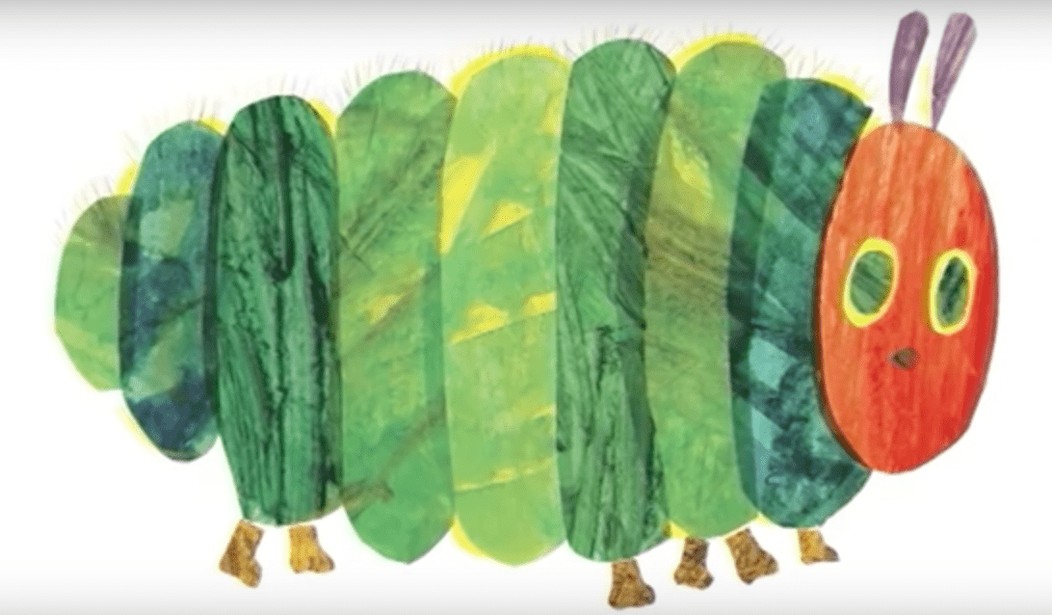Let’s pretend you’re a children’s librarian and a kid comes up to you and asks for help finding books for his project on bears. Would you point him in the direction of Little Bear, Winnie The Pooh, and Paddington? (If your answer is yes, it’s probably best you’re not a children’s librarian. Or, if you are a children’s librarian, it’s probably best if you start looking for another job.)
The answer to whether you’d point the kid in the direction of those books, obviously, is no. Those are works of fiction. Excellent ones, for sure, but no one would assume they accurately represent the species. They wear clothes, talk, and live in houses, for starters. They are meant to entertain, not instruct.
You know this. I know this. But, apparently, some people are a little confused. An article published last week on AtlasObscura.com called “The Very Hungry Caterpillar Lied to You As a Child” highlights the frustration some people are having with the fact that children’s books aren’t “accurate.”
Yes, you heard me right. Some biologists are apparently very concerned that, in books geared toward children, animals do things like talk, wear clothes, and live in homes made for people. That would never happen in real life. So why is it happening in a book? Um . . . well . . . because . . . it’s a book!
Slightly less ridiculously (but only slightly), the article says that some of these scientists are concerned that many fictional books for kids contain incorrect biological information. One entomologist, for example, is having a hissy fit about The Very Hungry Caterpillar because butterflies emerge from chrysalises, not cocoons. Jeez, Eric Carle. Get your act together. (Caterpillars also don’t eat lollipops, but maybe we can let that slide since the title specified that he was very hungry, not just a little bit hungry, and all kinds of weird things happen when you’re starving. Even to caterpillars.)
Similarly, there is concern over things like animals from different regions inhabiting the same story, and landscape illustrations that include “inaccuracies.” Not to mention featuring only well-known animals and leaving out animals specific to the regions where the readers live. Or, as the article puts it: “Kids who grow up reading only about tigers don’t know to teach their own kids about the colocolo.” Coming soon: The Colocolo in the Hat. A cautionary tale reminding youngsters never to put headwear on wild animals. None of the lines scan but the pictures will be accurate.
According to the article, there’s actually a publisher (called Arbordale Press) whose mission is to publish “accurate” children’s literature. Snore! Apparently they do allow some books that include talking animals but, of course, these have to come with fact sheets and activities explaining how the story you just read is wrong, wrong, wrong.
Can we just pause for one second in order to grab all these people by the lapels of their lab coats, shake them vigorously back and forth and scream “What on earth is wrong with you??!!” loudly into their faces? Okay, now that that’s done, we can move on.
Allow me to state the obvious: children’s literature (or literature in general, for that matter) is not meant to be accurate, it’s meant to be entertaining. Animals are metaphorical representations of different human traits, making them easily accessible to kids. We’re not meant to learn, for example, that the primary diet of woodland wolves in elderly ladies, but rather that sometimes people are not what they seem.
But how will the children learn anything at all?! I can just imagine these ridiculous people wailing. Apparently, the push for more “accuracy” in children’s literature comes out of concerns that children are learning less and less from experience in the world and more and more from screens.
The article reminds us that, “in an infamous 2002 study of a group of UK schoolchildren, kids older than eight were better at identifying Pokemon than real-life local animals.” Okay, maybe once I’ve stopped laughing hysterically about this I could acknowledge that this is a problem. But what has fiction got to do with it? Get these kids some textbooks and fire their biology teacher.
Katie Cunningham, senior editor at Candlewick Press, is the only voice of reason in the whole article. You can just imagine her sitting at a desk somewhere, speaking in the calm and measured tones of someone talking to a potentially dangerous idiot: “In fiction, we suspend all kinds of disbelief in service to a larger truth,” she says. “If, in pursuit of that truth, a pig must fraternize with an elephant, then so be it.”
So be it indeed! Listen, if you want to find better ways to teach kids about nature, be my guest. But don’t ruin a good thing in order to do it. If I have to choose between understanding the relationship between the egret and the water buffalo, and understanding the relationship between someone who is small but cunning and someone is who is big but dumb, I’d pick the latter every time.
But, of course, I don’t have to choose. And you don’t either. If you’re doing a project about bears, check out the nonfiction section. You’re sure to find more than enough books for your purposes. And if you want to spend a lazy afternoon reading about the exploits of Pooh Bear and all is friends, check out the fiction section. It’s his natural habitat, after all.









Join the conversation as a VIP Member